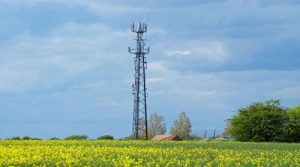 One of the things that concerns us most at Ayrstone is the issue of broadband Internet connectivity in the Rural U.S.
One of the things that concerns us most at Ayrstone is the issue of broadband Internet connectivity in the Rural U.S.
AyrMesh, of course, doesn’t provide Internet connections – our business is helping you extend your Internet connection across your property ONCE YOU HAVE THAT CONNECTION. AyrMesh can help in some cases: for instance, having an AyrMesh network can let you use an Internet connection on one part of your property far from your home or farm office, and extend that connection all over your property. For instance, some of our users were only able to get satellite coverage at their homes, but bought AyrMesh products so they could connect to Cable at the other end of their property and extend that to their homes, offices, and other on-farm buildings. The result: fast, low-latency Internet coverage across their property.
But having that first connection to the Internet is critical, and there are large areas of the rural U.S. where there are no good options (and, in some cases, no options at all) for connecting to the Internet.
I want to quickly discuss some of the connectivity ideas that are being talked about now and talk about the pros and cons of each. NOTE: since we don’t provide Internet access, and we’re really not looking to get into the business, so we don’t have a dog in this race. So this is an unbiased and fairly dispassionate assessment of these products and technologies.
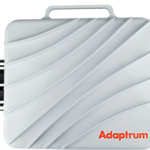 Whitespace
Whitespace
I am continually encouraged that no less of a technology company than Microsoft is working on this problem, and has been for a few years now. But their “solution” (fixed wireless over “white space” – unused TV broadcasting frequencies) just expands the solutions available for Wireless Internet Service Providers (WISPs) in rural areas with solutions that are unable or barely able to deliver the current definition of “Broadband” (25 Mbps). They all depend on UHF radio spectrum, which is strictly a “line of sight” (or, more technically correctly “>60{8fd1ffa65f67a2e931916b3c1288d51eed07dc30586a565c92d055673de7c64e} clear Fresnel zone”) medium. Now, whitespace UHF goes all the way down to under 500 MHz – lower than LTE at 700 MHz – which helps a lot with things like tree crown penetration. There have been breathless articles published with “helpful diagrams” showing whitespace radios effortlessly jumping over hills – just to be clear, that’s just not how radio works. The only way radio “jumps” over hills is to be bounced off the ionosphere, and only relatively long-wave radio signals (e.g. AM radio) can do that. The problem is that the data-carrying capacity of those signals is in the tens of bytes (bytes, not Kilobytes or Megabytes) per second, several orders of magnitude less than is needed for Internet access.
So – whitespace is a useful tool in the hands of rural WISPs for expanding fixed wireless coverage, but it’s not the magic bullet. And, unfortunately, if you define “broadband” as 100 Mbps or higher, it’s not even broadband.
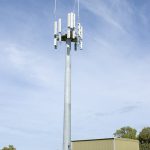 Cellular – 5G
Cellular – 5G
I just laughed at a friend who told me that the rural wireless problem is solved, because we’ll have ubiquitous 5G cellular coverage soon. It’s a great story, and Cisco has been pushing it pretty aggressively (through their “5G Rural First” campaign, among other outlets), but, I’m afraid, it’s far from accurate.
First off, the real promise of 5G involves the use of “FR2” frequencies, which are 24 GHz. and up, with “perfect line-of-sight” ranges in the hundreds of yards and almost no ability to penetrate trees, walls, and other obstructions. Placing towers every few hundred yards across rural areas is not going to happen any time in the forseeable future.
Now, 5G also utilizes the existing cellular frequencies (700, 800, 1900 MHz. in the U.S.) and improves the efficiency of those frequencies to increase throughput up to 50{8fd1ffa65f67a2e931916b3c1288d51eed07dc30586a565c92d055673de7c64e}. So, if you have LTE (4G) access now, you could see the speeds increase when your carrier and you move to 5G, which is a good thing. But the coverage will not change appreciably, so it’s FAR from revolutionary.
Bottom line – cellular remains a valuable way of accessing the Internet, both via mobile (cellphones, etc.) and fixed installations. We have numerous customers who have set up fixed cellular installations on a hill (with a solar power system and a yagi antenna pointed to the nearest cellular tower) and used AyrMesh to spread that connectivity across fields and to homes and farm offices, and 5G will help with that – a little, if you’re lucky.
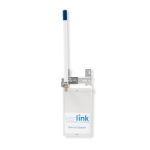 LPWAN
LPWAN
One of the popular topics around rural wireless is the use of Low-Power Wide-Area Networks (LPWANs) like LoRa and Sigfox. These technologies are narrow-banded UHF data radios that can provide low-bandwidth (tens to hundreds of thousands of bits per second – under 1 Mbps) wireless signals over very large areas. The narrow bandwidth allows the signals to go much farther than wide-banded cellular or WiFi signals, but they don’t carry enough data to be anywhere near broadband. They are primarily aimed at enabling battery-operated sensor networks.
There are carriers deploying these technologies – Sigfox has a good coverage map (scroll all the way to the bottom of the list for the U.S.) and companies like Senet are rolling out LoRa coverage in rural California, for instance. However, what you see is that these are primarily urban technologies – there is just a lot more opportunity to connect things in urban environments, so that’s where the investment in infrastructure is going.
We also see some large ranches out in California setting up private LoRa networks for soil sensors. Those networks use some other form of Internet connectivity to move the data to the Internet, but it’s a way to get the sensors out in the fields without waiting for a company to set up towers and bring service. The LoRa gateways typically have an Ethernet port which can plug directly into the LAN port of a router or an AyrMesh device.
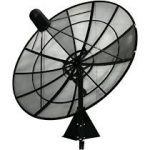 Other Fixed Wireless
Other Fixed Wireless
Every so often I run across an article espousing some other wireless spectrum that can be used for rural wireless access – here’s one talking about using lightly-used satellite C-band frequencies. C-band is, roughly speaking, 4 GHz. to 8 GHz., so it is potentially a high-bandwidth solution (note that 5 GHz. WiFi like 802.11a, 802.11ac, and 802.11ax are within C-band) but also a very strictly line-of-sight technology. I would hate to see too many WISPs start using C-band, because some of the rural bars I hang out in use C-band antennas to pull in “Free-to-air” TV signals, and too many local C-band data links might fuzz up the picture of the Brazil-Uruguay soccer match. However, all these frequencies might eventually end up in use to help WISPs expand their reach into rural areas – a good thing, but, again, not revolutionary.
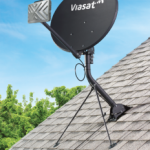 Satellite
Satellite
Today there are two main choices for satellite broadband internet coverage: HughesNet (EchoStar) and Exede (ViaSat). Both offer broadband coverage, as long as you have a good view of the southern sky, but both services suffer from two problems:
- Data caps – after you have transferred some amount of data, they will either charge you extra or limit your access speed, and
- Latency – it simply takes about 1.5 seconds to get the data up to the satellite and back down to Earth, which makes “real-time” applications like telephony difficult.
These services use Geostationary satellites that are far out in space so they can orbit the earth at the same speed that the Earth is turning, so they appear stationary relative to the planet’s surface. That way you can have the dish on the roof pointed to the south for constant connectivity. If there’s no WISP that can service your farm, satellite may be your best option.
There has, for some time, been a second form of Satellite internet access, using what are called “LEOs” – Low-Earth Orbit satellites. The old Iridium phones use a network like this network for very low-speed messaging and voice.
Lately, more companies have taken an interest in this – OneWeb and SpaceX are sending hundreds of satellites into orbit with the goal of providing terrestrial wireless Internet coverage, and there are many others who want to get in on this – both for high-bandwidth Internet connectivity and low-bandwidth IoT connectivity (like LoRa or SigFox, but without the towers…).
Will these become a viable option for the farm? I’ll bet one or more of them do… some day. Just not next week, or probably next year.
 Wires and Fiber
Wires and Fiber
If you live close enough to town, you may have access to DSL or cable internet service, which can provide speeds of up to 100 Mbps (sometimes even more). And a lucky few rural residents have fiber access, which can provide up to 1 Gbps (1000 Mbps) service, and potentially more.
For those who have access to fiber, it’s unquestionably the best option: high speed and lowest latency (time from your farm to the Internet). Cable and DSL are the next-best options. Fixed wireless (WISPs) and fixed cellular are the next-best options, and Satellite is generally the last choice for Internet access. That said, we have a LOT of AyrMesh customers with Satellite Internet access – it’s the ONLY option in a lot of rural areas.
So…where next?
Here’s the thing – cellular, fixed wireless, satellite, and even cable and DSL are barely able to reach modern broadband speeds of 25 Mbps, and few can reach 100 Mbps.
That’s not going to be enough very soon – 100 Mbps is going to be the absolute minimum, and everyone is going to expect 1 Gbps or faster Internet. LEO satellites may be able to provide that in the future, but, at the moment, the only option for that speed is fiber.
There are a lot of initiatives to improve rural broadband service – state, county, and even local governments have created incentives, and the USDA has had numerous programs over the years, with the 2019 program the biggest so far.
However, these programs have historically prompted existing service providers to extend their coverage, whatever it is, marginally into more rural land. That helps, but it’s not getting us to 100-1000 Mbps for all farms.
Putting fiber into rural roads is going to be disruptive and expensive, but it’s likely to be the only way to get the kind of bandwidth that will be required for modern homes and businesses. Many communities already have conduit placed under roadways, ready for fiber, and many areas have miles of “dark fiber” that can be utilized. Encourage local governments and businesses to utilize the resources available to bring true broadband (100 Mbps and more) out to rural farms – moving forward, it’s going to be as important as electricity in keeping our agricultural industry competitive, so this should be the equivalent of the Rural Electrification Project.
Whitespace, C-Band, and 5G may provide good stopgaps, depending on where you are, and LEO satellite Internet may (or may not) eventually provide gigabit speed wireless connectivity – obviously, I’m hoping it does, but it’s not going to be this year or next. Our recommendations are as follows:
- Get good Internet connectivity however and wherever you can.
- Use AyrMesh to “light up” your farm with WiFi (OK, that’s a bit self-serving, but, hey, it’s our blog…)
- Work in your community to bring optical fiber connectivity to your farm. If you’re close enough to the nearest fiber distribution center, it might not be too hard, but, in general, this is expensive.
- Hope the LEO satellite companies deliver.
This is probably not our last word on this topic…

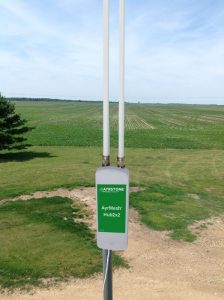

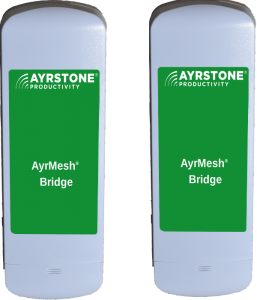
 One of the things that concerns us most at Ayrstone is the issue of broadband Internet connectivity in the Rural U.S.
One of the things that concerns us most at Ayrstone is the issue of broadband Internet connectivity in the Rural U.S. Whitespace
Whitespace Cellular – 5G
Cellular – 5G LPWAN
LPWAN Other Fixed Wireless
Other Fixed Wireless Satellite
Satellite Wires and Fiber
Wires and Fiber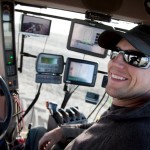 There is an image of farming – bucolic, peaceful, unfettered by the concerns of the technological age. It’s lovely, and many of us indulge it to some degree… but it is patently false. Agriculture is an industry moving quickly on the technology curve as markets demand more, higher-quality, and cheaper food and grains. Specialized implements, higher-horsepower machines, GPS steering, variable rate planting and spraying, and the cellphone have all had an impact on farm productivity. But that’s not all.
There is an image of farming – bucolic, peaceful, unfettered by the concerns of the technological age. It’s lovely, and many of us indulge it to some degree… but it is patently false. Agriculture is an industry moving quickly on the technology curve as markets demand more, higher-quality, and cheaper food and grains. Specialized implements, higher-horsepower machines, GPS steering, variable rate planting and spraying, and the cellphone have all had an impact on farm productivity. But that’s not all.
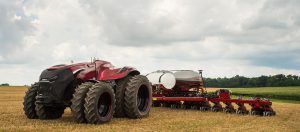
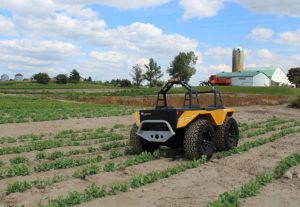
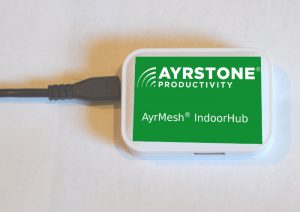 We are pleased to introduce the new
We are pleased to introduce the new 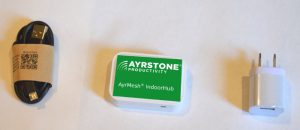
 The new AyrMesh Hub2x2
The new AyrMesh Hub2x2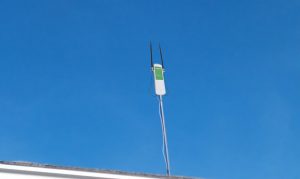
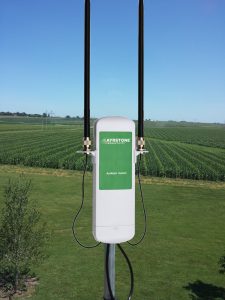
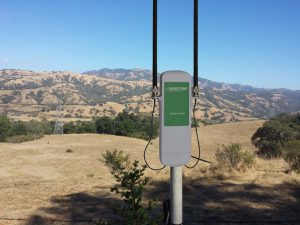
 We are pleased to introduce the new model of the
We are pleased to introduce the new model of the  The ability to mount the Receiver on a flat surface (without additional hardware) is a feature that many users requested over the years, and the ability to add an outdoor PoE device will, we think, enable our customers to enhance security and operational awareness.
The ability to mount the Receiver on a flat surface (without additional hardware) is a feature that many users requested over the years, and the ability to add an outdoor PoE device will, we think, enable our customers to enhance security and operational awareness.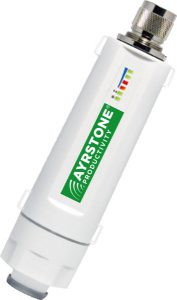 The other interesting change is the addition of a “gland” on the bottom of the radio. This gland makes it a bit trickier to install the Hub, but it protects it from water splashing up from below. This addresses concerns we have heard from some livestock operators who want to put Hubs near livestock pens or in milking parlors or farrowing houses, but worry about having to spray water around the Hub. We still don’t recommend spraying water directly up at the Hub, but this Hub will better withstand inadvertent sprays of water from below.
The other interesting change is the addition of a “gland” on the bottom of the radio. This gland makes it a bit trickier to install the Hub, but it protects it from water splashing up from below. This addresses concerns we have heard from some livestock operators who want to put Hubs near livestock pens or in milking parlors or farrowing houses, but worry about having to spray water around the Hub. We still don’t recommend spraying water directly up at the Hub, but this Hub will better withstand inadvertent sprays of water from below.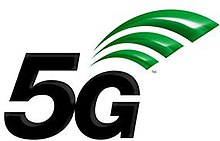 I have a Google Alert for “Wireless Farm” – I get about an article a week (and many of them are about wireless technologies for “server farms” and other odd things). But today I got a link to this article about “
I have a Google Alert for “Wireless Farm” – I get about an article a week (and many of them are about wireless technologies for “server farms” and other odd things). But today I got a link to this article about “